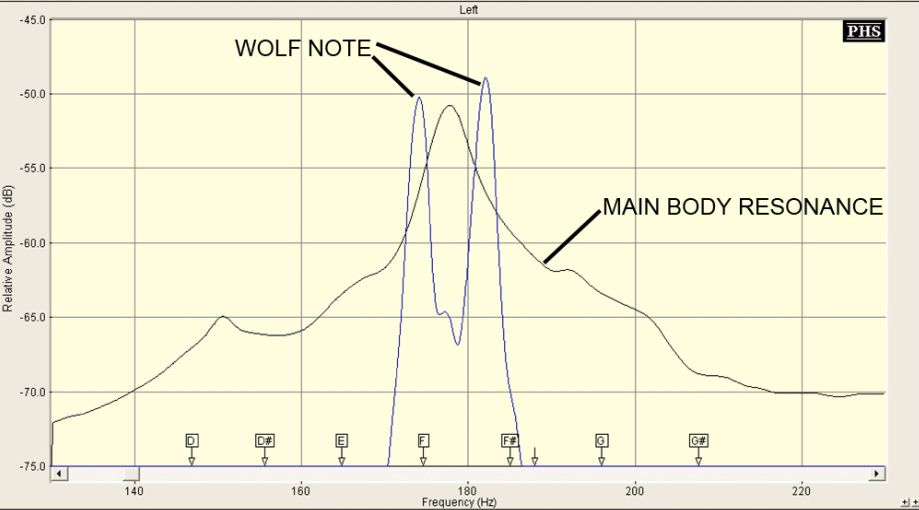By Kevin Berdine, cellist, and Andy Fein, Luthier at Fein Violins
Have you ever heard your cello howl? For those of you who haven't heard it, this is a weird question, right? But for those who have experienced this phenomenon, you know exactly what we're talking about. A wolf tone is so-named because it sounds a bit like a wolf howling. Wolf note or wolf tone Is there a difference? No! It's two different names for the same phenomenon.

- The best way to reduce a wolf tone is to keep a Pollymute below your bridge. In fact, we install them on all of the cellos we sell.
- If that doesn't work ( and really, it's the easiest and most effective!)---
- Try a different string tension or even try a different brand of strings altogether.
- Change your bow hair tension.
- Experiment with different bows; weirdly, some bows may play right through a wolf note.
- Lighten your bow weight when approaching the wolf note.
- Experiment with Wolf Eliminators/Suppressors. There are many different varieties on the market.
- Modify your vibrato to control wolf notes.
- Some cellists share that they squeeze the lower bouts with their knees to dampen the cello as they play a wolf note.
- All of these can work, but we find the best way to reduce a wolf tone is to keep a Pollymute below your bridge. In fact, we install them on all of the cellos we sell.
- Lastly, as shared above, most wolf-tones howl the most up on the G or C string. To this end, you may choose to play that pitch on the D string in 1st position.
Need a great-sounding cello? We have them for sale- Fine Cellos from Fein Violins and we rent them also. Email (mail@feinviolins.com), text (651-333-8993), or call (651-2280783). We'll be happy to hear from you!
By the way, you'll hear or read about 'wolf eliminators'. We're referring to wolf tone eliminators! We love the wolves of Minnesota! Did you know Minnesota has the largest wolf population of any of the lower 48 US States? Don't worry, they don't like St. Paul. But the Arrowhead region of Minnesota is wolf heaven!
Hear the first howls of wolf pups in Voyageurs National Park
https://wolfterminator.com/the-physics-of-the-wolf-note/





No comments:
Post a Comment